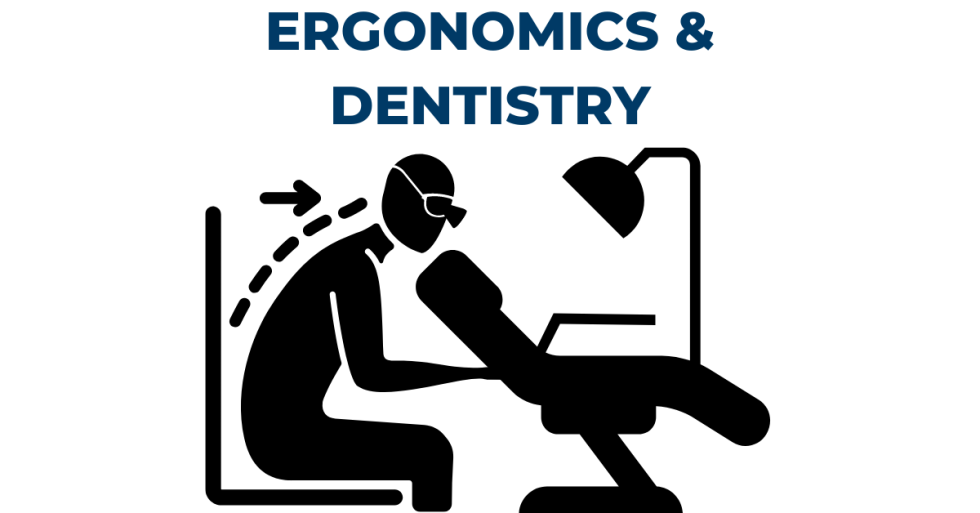If you’ve ever experienced back pain, neck strain, or fatigue after work, you know how demanding dentistry can be on your body. Adopting proper dental ergonomics is essential for keeping you comfortable and healthy throughout your career. Simple adjustments in your work environment and daily habits can make a noticeable difference. Modern solutions now make it easier to design a workspace that helps prevent discomfort while supporting focus and precision in clinical work.
Why ergonomics matters in dental practice
Dentistry often requires static postures, forward leaning, and repetitive hand movements for extended periods. Over time, these factors can contribute to musculoskeletal disorders that affect the back, neck, shoulders, and wrists. Many dental professionals report physical strain early in their careers, highlighting how important it is to adopt preventive measures rather than waiting until injuries develop.
Ergonomics in dentistry focuses on how the environment and equipment interact with the practitioner’s body. By aligning instruments, patient chairs, and operator stools in a way that minimizes excessive bending and twisting, dentists can reduce unnecessary stress. The aim is not only to avoid discomfort but also to maintain precision during treatments. A well‑planned layout supports efficient movements, allowing practitioners to complete tasks with less fatigue. This approach does not just preserve physical health but also helps maintain clinical clarity and long-term career satisfaction.
Equipment that supports better posture
One of the most direct ways to improve ergonomic conditions is through equipment designed for comfort and adaptability. Adjustable operator stools play an essential role, as correct seating helps regulate posture throughout long procedures. Features such as height control, lumbar support, and freedom of leg movement make it possible to sit in a balanced position for extended periods without fatigue.
Patient chairs also influence ergonomics. The ability to adjust height and backrest angles ensures that patients are positioned effectively, allowing the dentist to work within an optimal range. This reduces the need for excessive leaning or twisting, which often leads to discomfort over time. Likewise, dental units with strategically placed instruments keep tools within natural reach, minimizing unnecessary stretching or wrist strain. Small design improvements, such as flexible hoses or foot-controlled adjustments, can further reduce awkward movements. Taken together, these adjustments form the basis of an environment where work can be done with both comfort and precision.
Work habits that reduce strain
Even with supportive equipment, daily work habits strongly affect long‑term well‑being. Taking short breaks to stretch between appointments promotes circulation and maintains flexibility. These pauses take very little time but can significantly lower the physical demand that builds throughout a busy schedule. Regular micro‑breaks are especially useful in preventing tension in the neck and shoulders.
Lighting is another essential factor. A well‑lit workspace reduces eye strain and helps minimize the tendency to lean forward when visibility is limited. Magnification devices such as loupes improve posture and allow dentists to perform delicate tasks without compromising their spinal alignment. Beyond this, alternating between tasks, such as moving from operative procedures to consultations, can decrease repetitive strain. By balancing posture‑challenging activities with less demanding tasks, practitioners create a rhythm that protects their body. These strategies emphasize the importance of awareness alongside equipment, ensuring that ergonomics becomes a consistent part of daily practice.
Long term benefits of ergonomic awareness
Thinking about ergonomics goes beyond addressing discomfort in the present moment. Over years of practice, maintaining healthy working positions can significantly lower the risk of chronic musculoskeletal disorders. Those who practice ergonomically tend to experience fewer interruptions in their careers due to injury and often enjoy greater stamina. This contributes not only to sustained productivity but also to a more positive work‑life balance.
A healthy ergonomic approach also influences the quality of care. When comfortable, practitioners can maintain higher levels of focus throughout longer appointments. This consistency benefits patients, who are more likely to feel reassurance from relaxed and attentive caregivers. An ergonomically supportive environment, therefore, has value that extends beyond physical health. It nurtures precision, supports smoother communication with patients, and builds the foundation for a sustainable professional journey. Long‑term awareness of posture and habits reinforces resilience, ensuring that dentistry can remain a fulfilling career path without being overshadowed by physical strain.



